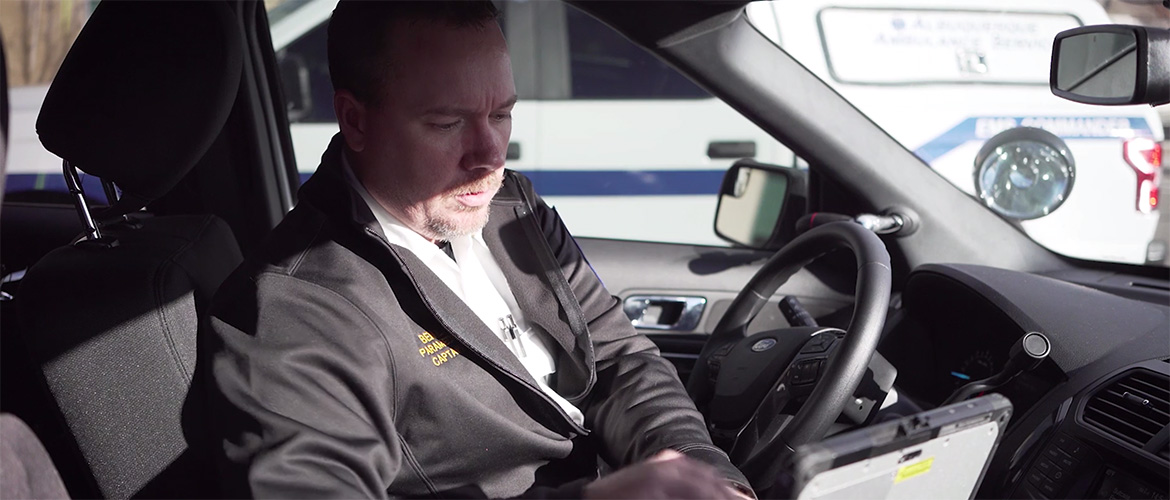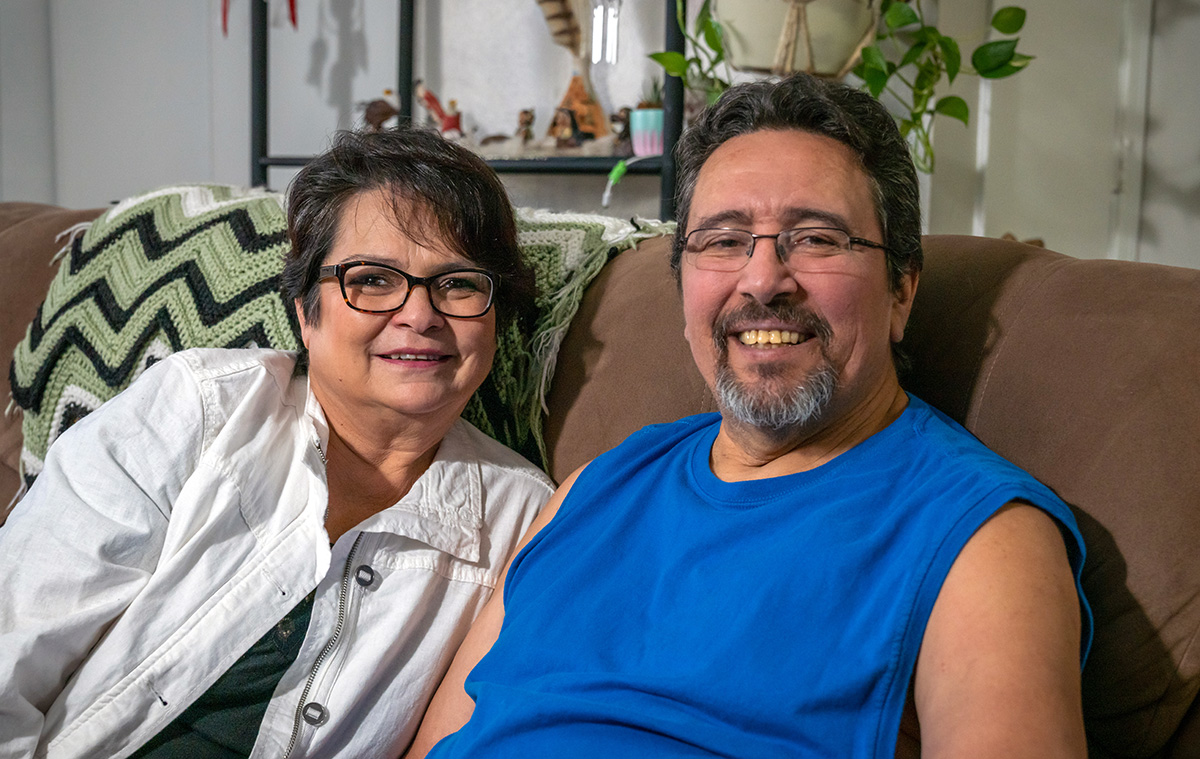Congestive heart failure nearly killed Michael Gonzales last year.
His heart, damaged by atrial fibrillation, or Afib, became enlarged and weak. It barely pumped enough to circulate blood, causing painful and life-threatening fluid buildup in Gonzales’ lungs. He spent two weeks at an Albuquerque hospital, where doctors worked to control his condition.
The traumatic event led to Gonzales’ enrollment in Blue Cross and Blue Shield of New Mexico’s Community Paramedicine program to help him better manage his condition, plus find resources to improve his life.
After his hospital stay, paramedics visited Gonzales’ home to assess his health and environment. They verified he had his medications, understood his follow-up orders and could connect with other services he needed to try to prevent another hospital admission.
“It was something I really needed,” says Gonzales, 59, who’s a bit weak from a recent surgery to control his Afib. “They make it personal. At times, I looked forward for them to come to the house.”
Reducing ER visits, hospital readmissions
Almost five years ago, BCBSNM started its Community Paramedicine program as a pilot with Albuquerque’s ambulance services. The Plan wanted to improve health outcomes for Medicaid members at risk of repeated emergency room visits and hospital readmissions.
The program targets members with chronic medical conditions such as diabetes and congestive heart failure who also may face social roadblocks to better health, including unstable housing, unreliable transportation or lack of nutritious foods.
Using real-time hospital data, BCBSNM identifies potential participants and provides the names and contact information to the ambulance services. Emergency medical workers such as paramedics then try to find the members up to 72 hours following an ER visit or hospital discharge.
After making contact, paramedics assess members’ health and home safety and check vital signs and medications. They educate members about medical conditions, medications and appropriate follow-up care and services. Paramedics also alert BCBSNM if members may need behavioral health or social services to address possible health care barriers.
Since the program’s official 2016 launch, ER visits among program participants have dropped at least 40%. The 30-day hospital readmission rate hovers between 11% and 12%.
In 2018, the program enrolled 2,266 members and saved $1.3 million in ER costs.
“One of the reasons Community Paramedicine is successful is because paramedics and emergency medical providers in their community have inherent trust,” says Ginger Robertson, the senior manager of government programs and clinical operations for BCBSNM.
Since members know they can rely on emergency medical responders to show up in a crisis, she says, they believe those same providers want to help them improve their health.
Members typically spend six months in the program, and paramedics routinely make home visits to assess members’ well-being. In 2019, BCBSNM launched a remote monitoring component, allowing members with congestive heart failure to use Bluetooth and web-based technology and equipment to track their vital signs and share with the program.
“Overall, we have about a 30%-40% engagement rate, which may not sound like a lot, but it is when you compare with the types of engagement rates that we see just trying to cold call or have care coordinator outreach,” Robertson says. “A lot of our members have significant challenges. If the paramedic can form that bond and do some education around additional resources that Blue Cross and Blue Shield can provide for that member, it’s a foot in the door.”
Bridging health care gaps
Although communities nationwide are beginning to implement paramedicine programs, the approach is still considered a new and evolving strategy in emergency medical response.
Ben Leonard, Albuquerque Ambulance Service’s Mobile Integrated Health captain, says it can be difficult for communities, as well as people in his profession, to see emergency medical services as a way to deliver preventive care. But he expects paramedicine to grow as more communities try to address perplexing health care and social service concerns.
“It’s really a proactive approach to EMS rather than the traditional reactive approach,” says Leonard, a 20-year paramedic. “You can identify the specific needs to a location, to a population, and make that program fit those needs.”
Robertson, a 30-year paramedic, says evolution of emergency medical services to include paramedicine is a critical step in helping members improve their lives.
“We’ve come a long way and realize that case management is one piece, but to have a community partner that’s trusted and respected within that community is huge,” she says. “If a community paramedic is out there and helping that member manage their medication and getting them involved in services, that’s going to save another paramedic from having to go out there at 3 o’clock in the morning to manage a catastrophic event.”
Unexpected outreach
Although he graduated from the Community Paramedicine program, Gonzales still works with a BCBSNM care coordinator who monitors his care, as well as his struggles with finances, housing and transportation. He hasn’t been healthy enough to work in almost a year.
Yet, he’s thankful for the help Blue Cross and Blue Shield provides.
“I’ve been sick before throughout my life, but I’ve never had an insurance company reach out how they have this time,” Gonzales says, choking back tears. “They will take care of you, and they care. They have no clue how much they have helped.”


